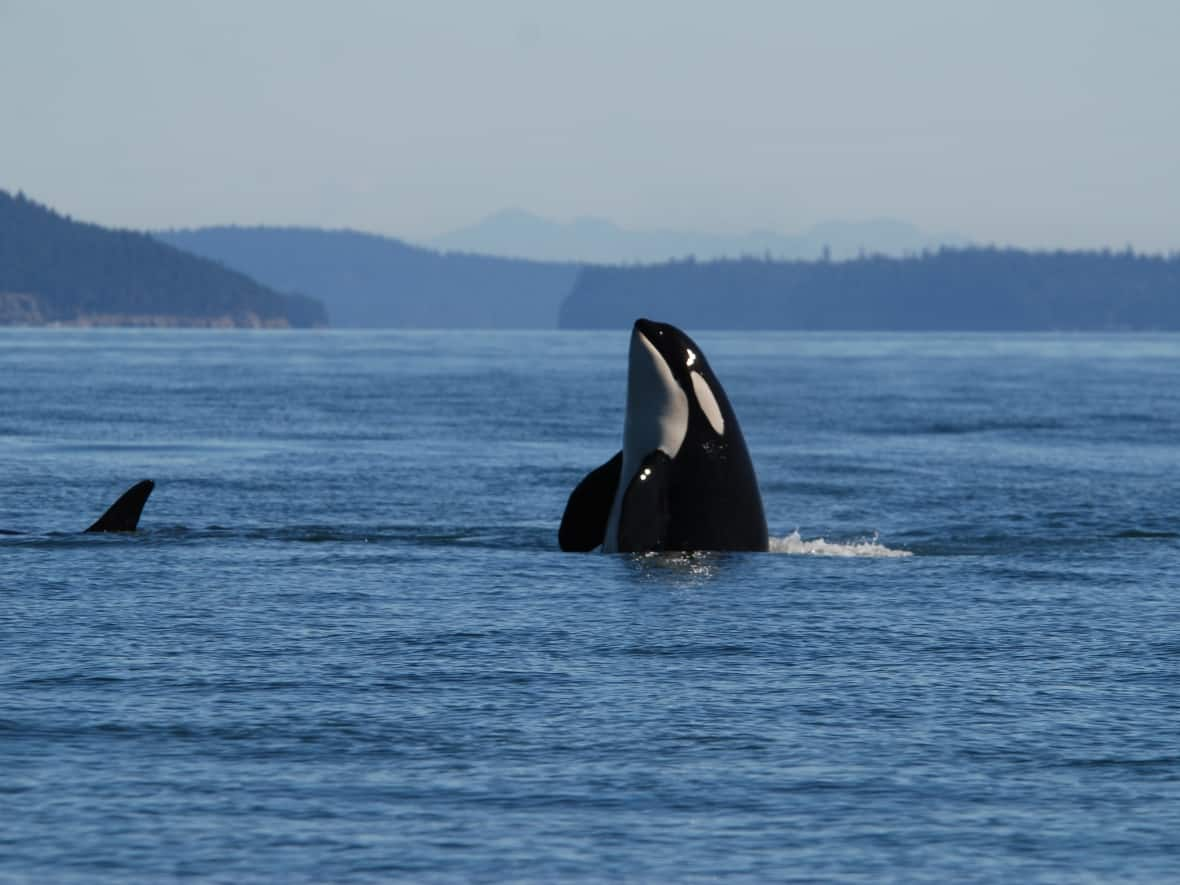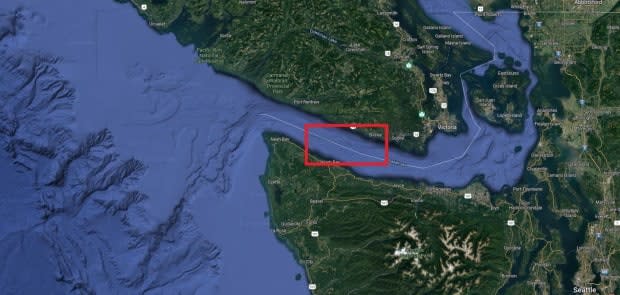Canadian Armed Forces to resume live-fire training off coast of Vancouver Island following marine mammal study

The Canadian Armed Forces says training involving firing guns from ships and planes will resume off the southwest coast of Vancouver Island in B.C., following a three-year pause to study its effects on marine life — which it has determined are negligible.
However, the CAF is advised to conduct further studies during training to see how in-air gunfire affects marine animals as not enough is known about the issue, according to the study.
The training area, known as "Whiskey Hotel," is in the Salish Sea along the Canadian and U.S. maritime border. It's about 295 square kilometres, roughly between Shirley, B.C. — about an hour's drive west from Victoria — and Sombrio Beach, further west. The area has been used as a range since the Second World War.
The Canadian Armed Forces (CAF) says the operations were paused "out of an abundance of caution … to undertake a comprehensive third-party evaluation of potential impacts to marine mammals, including Southern Resident Killer Whales."

The Salish Sea off Vancouver Island and north of Washington State's Olympic Peninsula is habitat for many marine mammals such as killer whales, humpback whales, minke whales, grey whales, porpoises, seals, sea lions and sea otters.
Human activities in the area, such as shipping, transportation, and tourism can affect the animals. The federal government has spent millions of dollars to study marine noise levels and to patrol the waters, to try and limit harm to species such as the Southern Resident Killer Whales (SRKW), which are listed as endangered under Canada's Species at Risk Act.
"Surface gunnery is a noisy activity and we had a gap in our knowledge with regards to noise and the possible interaction with the marine mammals in the area," said Capt. Jean Stéphane Ouellet, who oversees all CAF's maritime Pacific operations.
Researching how loud noises can harm animals
Andrew Trites, head of marine mammal research at the University of British Columbia, said loud noises, such as weapon fire, has the potential to harm the animals.
"Lots of people have expressed concerns over the effect that explosions have on the behaviour of the marine mammals," he said.

CAF worked with Fisheries and Oceans Canada over the issue and hired a third party, Vancouver's Golder Associates Ltd., to look at how small-arms munitions affect marine mammals in the area.
Its study found that the noise was most likely to affect marine mammals known to often forage in the area, but that "masking of underwater communications is expected to be limited due to the lack of overlap in frequency of small arms activities (dominant frequencies) and the vocalizations of SRKW and harbour porpoises and the expected low densities of humpback and grey whales."
Nonetheless, it found that there has not been enough study of the effects of in-air gunfire on marine mammals, and CAF should seek to conduct further studies during training activities to record marine mammal behaviour, especially when they are at the surface.
The CAF says all vessels and aircraft, including those of allied nations, conducting gunnery in the area are required to comply with "stringent mitigation procedures," aimed at protecting marine mammals.
They include sharing information with the Canadian Coast Guard (CCG), so that its Marine Mammal Desk can alert CAF ships and aircraft when there is marine mammal activity in the Whiskey Hotel area and firing activities can be halted.
No firing if mammal is within 250 metres
Changes following the study include no firing if a marine mammal is within 250 metres of a vessel, and a longer observation period before firing — 30 minutes — to try and detect marine mammals in the area.
Trites says he credits the military for hiring a third-party to study the issue.
He says the report from Golder is extensive and allows the military to determine things like how far it needs to be away from marine mammals, so as not to harm their hearing with weapon fire.
"They've done their due diligence," he said.
"It doesn't mean there might not be a risk, that an animal might not pop its head up in the wrong spot at the wrong time but it is very clear that the military is very aware of the potential for them to cause harm."


